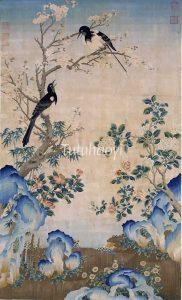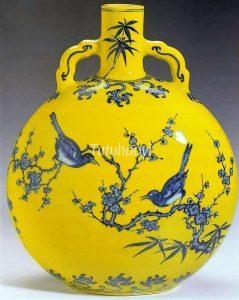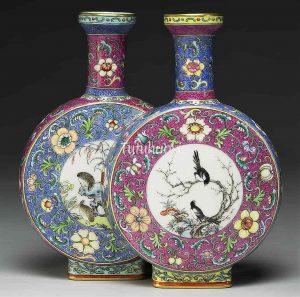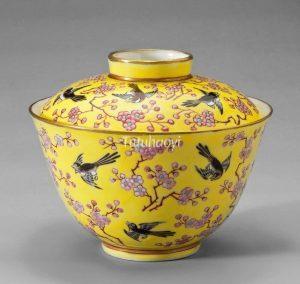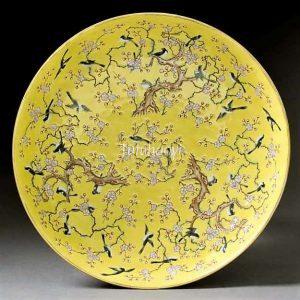May you have good luck and your happiness show at the tip of your eyebrow
喜上眉梢
© Tutuhaoyi.com owns the copyright of the description content for the images attached. Quoting all or part of the description content on this page is permitted ONLY IF ‘Tutuhaoyi.com’ is clearly acknowledged anywhere your quote is produced unless stated otherwise. (本页描述内容版权归Tutuhaoyi.com所有,转发或引用需注明 “Tutuhaoyi.com”, 侵权必究, 已注开源信息的条目除外。)
Pun Design:
Magpie + Prunus + On Top
Punning Details:
– ‘xi 喜’ in ‘xi que 喜鹊’ magpie has another meaning in Chinese which is ‘happiness’.
– ‘mei 梅’ meaning ‘prunus’ is a pun in Chinese on ‘mei 眉’ for ‘eyebrows’, which means spreading one’s eyebrows and smiling.
Therefore, the scene of magpies on the twigs of prunus trees delivers a message of ‘May you have good luck and your happiness show at the tip of your eyebrow’.
画面要素: 喜鹊 + 梅花 + 枝头;
谐音详情: “喜鹊”的“喜”谐音“喜乐”或“喜事”中的“喜”, “梅花枝头”谐音“眉头”
Related Pun Pictures:
Fig 1: Xi Bao Sheng Sun Tu 喜报生孙图, kesi silk tapestry, Song dynasty (960–1279), courtesy of the National Palace Museum, Taipei
Fig 2: porcelain moon flask with underglaze blue decoration, Yongzheng period (1723–35), Qing dynasty, courtesy of The Baur Foundation, Museum of Far Eastern Art, Geneva
Fig 3: porcelain teapot with overglaze enamelled decoration, Yongzheng period (1723–35), Qing dynasty, courtesy of the National Palace Museum, Taipei
Fig 4-5: Meiping vase with underglaze blue and overglaze enamelled decoration, Qianlong mark and period (1736–95), Qing dynasty, courtesy of The Baur Foundation, Museum of Far Eastern Art, Geneva
Fig 6: porcelain vase with overglaze enamelled decoration, Qianlong period (1736–95), Qing dynasty, courtesy of the National Palace Museum, Taipei
Fig 7: lidded porcelain cup with overglaze enamelled decoration, Tongzhi period (1862–74), Qing dynasty, courtesy of Philadelphia Museum of Art
Fig 8: porcelain dish with overglaze enamelled decoration, Tongzhi period (1862–74), Qing dynasty, courtesy of Princessehof Ceramics Museum, Leeuwarden, The Netherlands
Fig 9: mirror case with silk embroidery, 19th century, courtesy of the Metropolitan Museum of Art, New York
Fig 10: Xi Shang Mei Tou 喜上眉头图, hanging scroll, ink and colour on paper, Qi Baishi (齐白石, 1864–1957), 1947, courtesy of Shanghai Duo Yun Xuan
